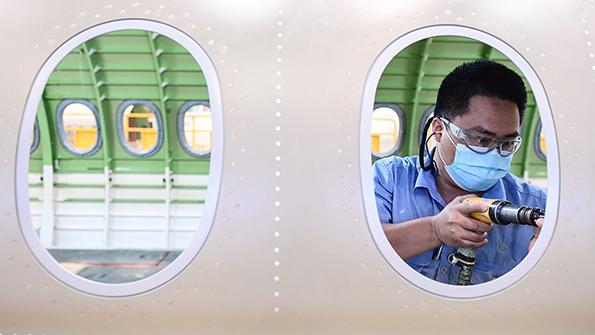
COVID-19 is the biggest crisis of the jetliner era, and attention is justifiably focused on air traffic, airline viability and production rates—with jetliner unit output likely to plummet 40-50% over the next two years. However, lurking beneath the surface are enormous supply chain risks that extend well beyond supplier viability and attrition. What are these risks?
Beginning with the OEMs, managing major rate reductions is an incredibly complex undertaking for supply chain organizations. Ordering and scheduling assumptions go out the window, and OEMs must negotiate with hundreds of suppliers—many already under financial duress thanks to the Boeing 737 MAX shutdown—to determine fiscal responsibility for work in process and inventory. Moreover, OEMs need to monitor the viability of thousands of suppliers several tiers down the chain to identify potential failure points. They need to avoid the crisis that hit the global automotive supply chain in 2011 when a single paint pigment supplier went offline following the Fukushima earthquake in Japan.
Communicating accurate and credible information to suppliers during a crisis is crucial. Lack of OEM supply chain function credibility will lead suppliers to develop their own production assumptions and capacity plans, which means they may not be ready when jetliner demand returns. Or they could overorder, weakening their financial position. OEM supply chain organizations are often caught between the company’s desire to present an optimistic outlook to financial markets and reality. Transparency and frequent communication are of paramount importance.
The playbook for managing these crises is learned through experience. Boeing’s last major downturn was nearly 20 years ago, when it reduced rates from 595 jetliners in 1999 to 274 by 2003. “There was a lot of chaos during this crisis,” a former Boeing supply chain executive tells me. “We didn’t have a full appreciation of the complexity of the situation, we didn’t thoroughly vet our assumptions, nor did we fully understand the supplier challenges of ramping up after the crisis.”
Most Boeing executives who navigated the early-2000s downturn have retired. What about Airbus? The stunning fact is that it has never faced a major production reduction. This raises the question: Where will these OEMs find the experience and insight to deal with the unprecedented COVID-19 downturn?
And what about supplier risks? It is no surprise that financial pressure is immense, and it is a result of a four-element sequence of events. First, suppliers endured OEM supply chain initiatives over the last decade that squeezed margins and reduced working capital. Then they were asked to invest significant capital to ramp up production as Boeing and Airbus girded for a future of 60-70 single-aisles per month. This was followed by the 737 MAX production shutdown early this year. Now COVID-19.
Chris Celtruda, a veteran industry executive, recently stated that 20% of jetliner suppliers could fail because of the pandemic. If he is correct, a commercial supply chain crisis could morph into a defense-industrial base crisis in the U.S. and Europe as crucial subtier suppliers fail.
For those suppliers that navigate the storm, major questions loom regarding operations. Should they believe OEM production-rate guidance? Should they commit precious capital to long-lead items or conserve cash? What is the appropriate level of production capacity? How deeply should they cut their workforce?
Finally, suppliers face the same experience gap as OEMs. How many leadership teams have managed through a major production downturn? Are owners—particularly private equity firms—patient enough to invest for the future and see this through?
All these risks point to the fact that the underappreciated supply chain function could be the most important within OEMs for the foreseeable future. These organizations must navigate an unprecedented crisis and prepare for and shape a post-COVID supply chain.
“OEMs have the power to pick and choose winners on the other side of the crisis,” supply chain guru Cliff Collier says. “And they need suppliers that are financially solvent and able to invest. This means they will no longer be able to select suppliers primarily based on price.”
The views expressed are not necessarily shared by Aviation Week.
Editor's note: This opinion piece was updated to revise the description of Chris Celtruda.





